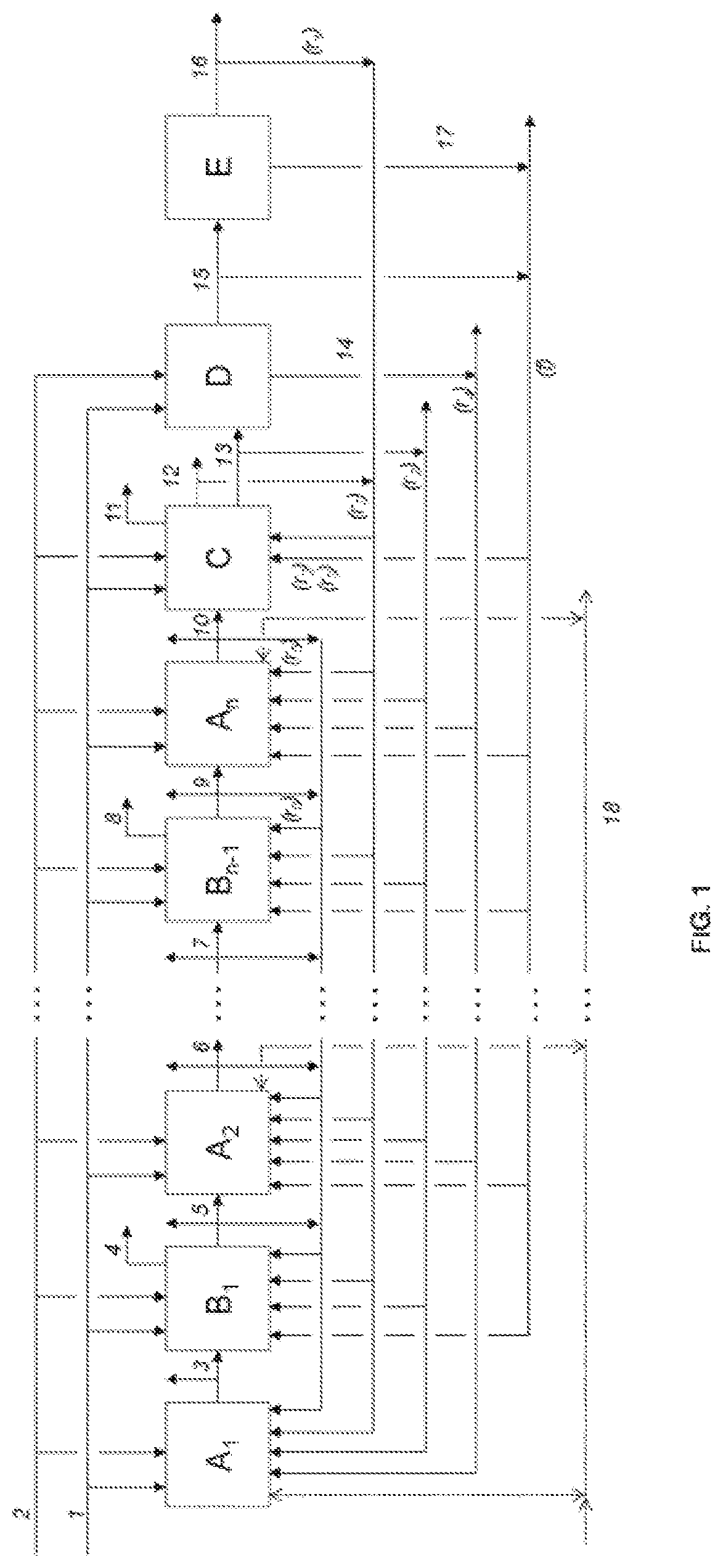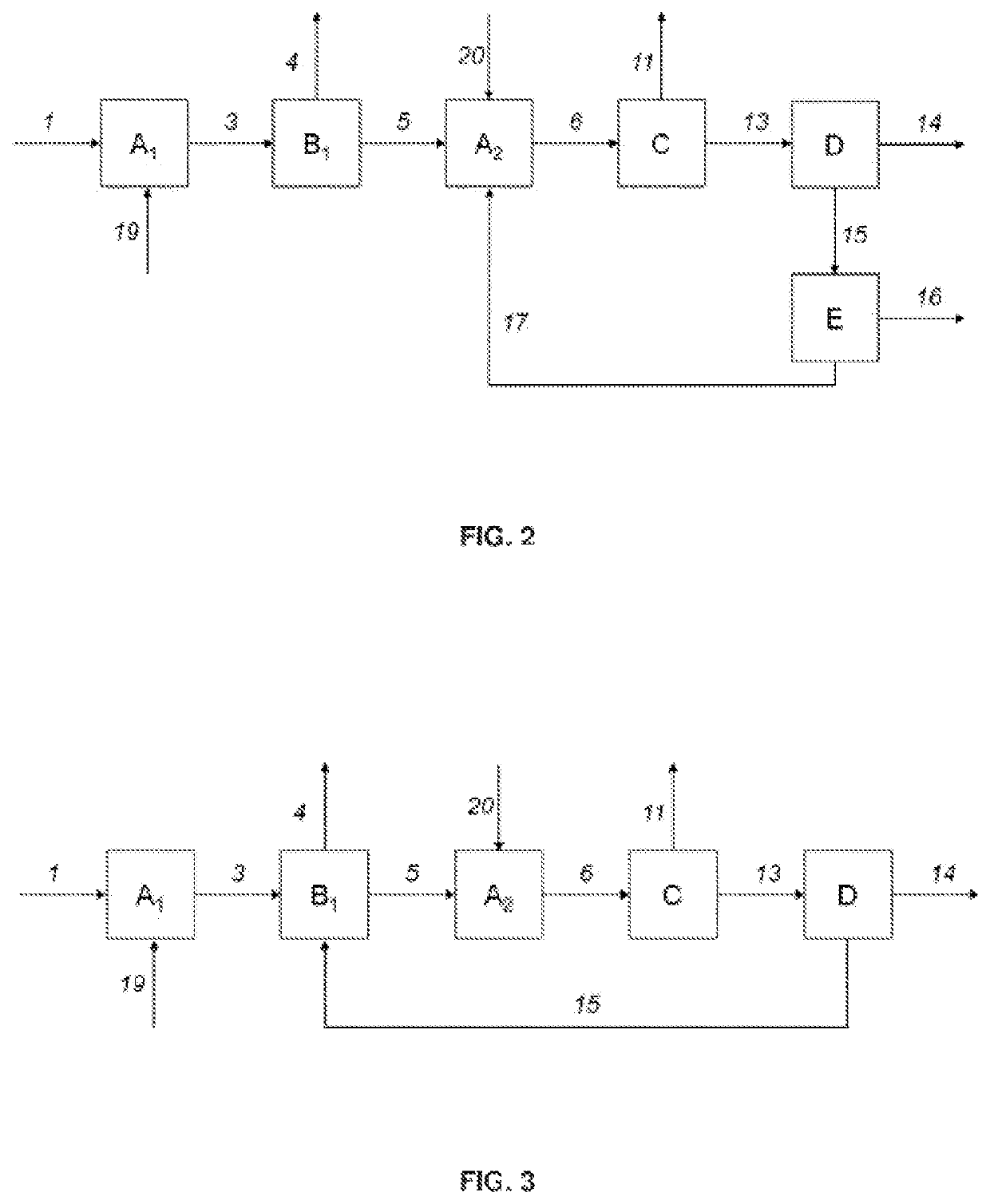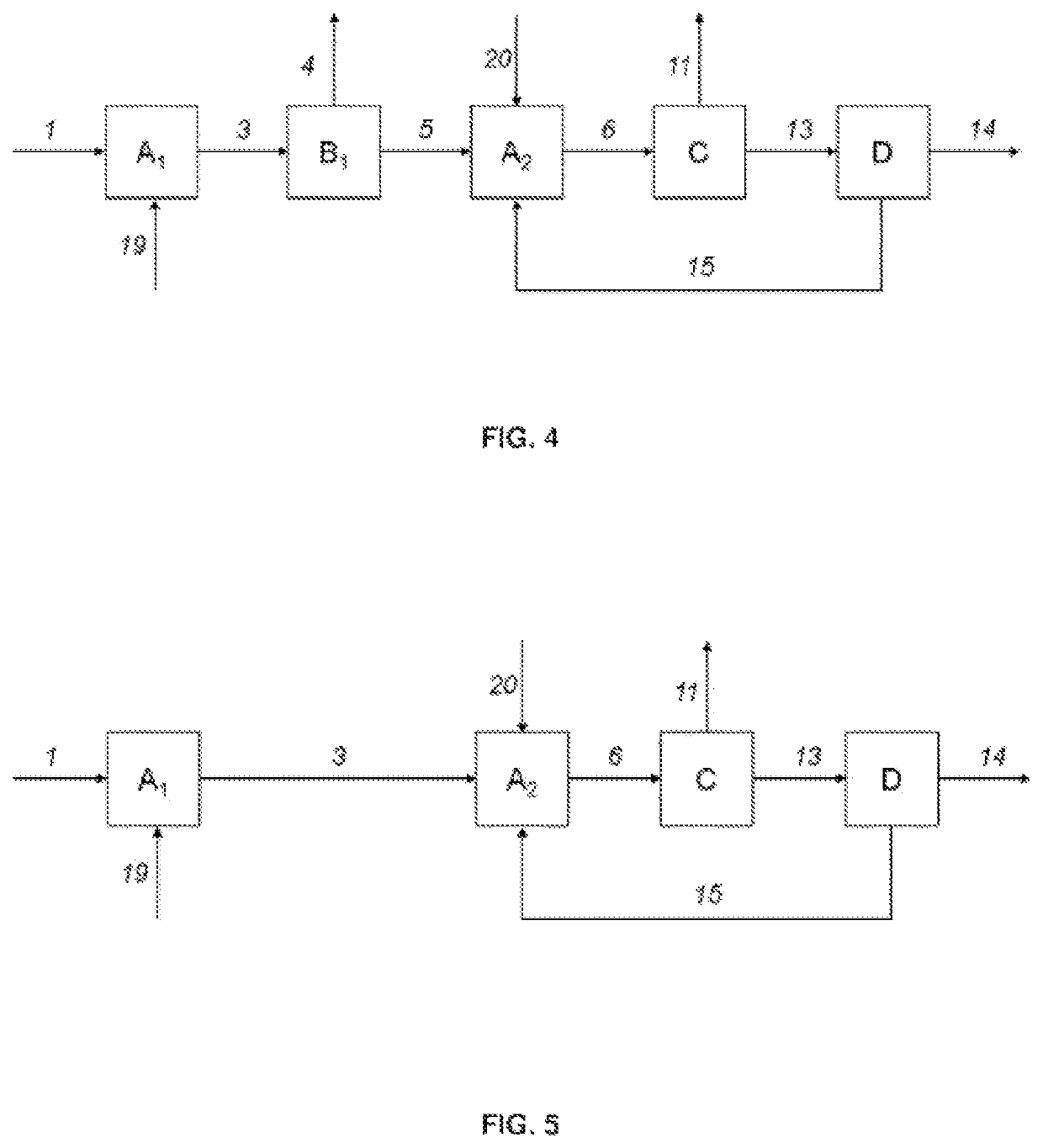Method for converting heavy hydrocarbon feedstocks with recycling of a deasphalted oil
a technology of deasphalting oil and hydrocarbon feedstock, which is applied in the direction of hydrocarbon oil treatment, solvent deasphalting, and refining to eliminate heteroatoms, etc., can solve the problems of catalyst particles, high viscosity and/or tacky particles composed of asphaltenes, and relatively difficult upgrading of these heavy feedstocks, so as to reduce the problem of deactivation of the catalyst used and the conversion degree is higher
- Summary
- Abstract
- Description
- Claims
- Application Information
AI Technical Summary
Benefits of technology
Problems solved by technology
Method used
Image
Examples
example 1
Process without Recycling of the DAO (not in Accordance with the Invention)
[0389]This example illustrates a process for hydroconversion of a heavy hydrocarbon feedstock according to the prior art including two successive hydroconversion steps each comprising a reactor with ebullated-bed operation, followed by a deasphalting step without recycling of the DAO.
[0390]First Hydroconversion Step
[0391]The fresh feedstock of Table 2 is all sent into a first hydroconversion section A′1 in the presence of hydrogen to undergo a first hydroconversion step (a′1), said section comprising a three-phase reactor containing an NiMo / alumina hydroconversion catalyst with an NiO content of 4% by weight and an MoO3 content of 10% by weight, the percentages being expressed relative to the total mass of the catalyst. The reactor has ebullated-bed operation operating with upflow of liquid and of gas.
[0392]The operating conditions applied in the first hydroconversion step are presented in Table 3 below.
[0393...
example 2
Process with Recycling of the DAO into the Inlet of the First Hydroconversion Step (not in Accordance with the Invention)
[0418]In this Example 2, the prior art is illustrated in a process of hydroconversion of a heavy hydrocarbon feedstock including two successive hydroconversion steps each comprising a reactor with ebullated-bed operation, followed by a deasphalting step with recycling of the DAO into the inlet of the last hydroconversion step.
[0419]First Hydroconversion Step
[0420]The fresh feedstock of Table 2 is first mixed with the DAO obtained from the deasphalting step (d″) in a fresh feedstock / DAO volume ratio equal to 75 / 25. This mixture is then all sent into a first hydroconversion section A″1 in the presence of hydrogen to undergo a first hydroconversion step (a″1). This section A″1 is identical to the one described in Example 1.
[0421]The operating conditions applied in this first hydroconversion section A″1 are presented in Table 8 below.
[0422]
TABLE 8Step(a″1)Reactor HSVh...
example 3
ccording to the Invention, which Aims to Reduce the Sediment Content of the Unconverted Vacuum Residue
[0443]In this example, the process according to the invention is illustrated in an embodiment including two successive hydroconversion steps each comprising a reactor with ebullated-bed operation, followed by a deasphalting step with recycling of the DAO into the inlet of the last hydroconversion reactor.
[0444]First Hydroconversion Step
[0445]The fresh feedstock of Table 2 is all sent into a first hydroconversion section A1 in the presence of hydrogen to undergo a first hydroconversion step (a1). This section A1 is identical to the one described in Example 1.
[0446]The operating conditions applied to this first hydroconversion step (a1) are presented in Table 13 below.
[0447]
TABLE 13Step(a1)Reactor HSVh−10.60Total PMPa16Temperature° C.420Amount of hydrogenNm3 / m3750
[0448]These operating conditions make it possible to obtain a hydroconverted liquid effluent having a reduced content of Co...
PUM
 Login to View More
Login to View More Abstract
Description
Claims
Application Information
 Login to View More
Login to View More - R&D
- Intellectual Property
- Life Sciences
- Materials
- Tech Scout
- Unparalleled Data Quality
- Higher Quality Content
- 60% Fewer Hallucinations
Browse by: Latest US Patents, China's latest patents, Technical Efficacy Thesaurus, Application Domain, Technology Topic, Popular Technical Reports.
© 2025 PatSnap. All rights reserved.Legal|Privacy policy|Modern Slavery Act Transparency Statement|Sitemap|About US| Contact US: help@patsnap.com



